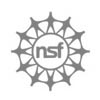Collaborative Cognition = Unblocking Uncertainty
When the absence for consensus becomes the limiting factor to hurdling innovation roadblocks, what other mechanisms ease collaborative cognition ? Here’s several for innovation plasticity.

In the race for interconnected innovation instances that continually lead to further convergence ( as divergences are a daily occurrence and also part of the design, engineering and innovation process ) we see that so to enable alternative mechanisms for lab based breakthroughs and to make it past the gauntlet of ( within large organization processes ) well honed, ‘ hold on, explain how that will work with / within my group ‘ situations, the key to success often resides in not only collaborative underpinnings but also the unblocking of known or subconsciously accepted risks. This is often separate and unrelated to enumerating the steps and changes necessary to make a specific modules work, solving technically ( and temporarily ) ” impossible ” situations and dealing with lab bench challenges. It is the steps in-between lab bench science and manufacturable usability that these challenges ultimately rear their ugly head.
Where we see this particularly well articulated is how Systemic Innovation Designers Through Informal and Collaborative Activities drive formal and specific processes which allows for the quantization of ever changing user attitudes often reflected as ‘ needs ‘ in certain circumstances: sometimes early on in the design processes. This is embodied in the further process of transversal competencies mediated by digital tools: telepresence, simultaneous collaboration, and synchronous and asynchronous communication which ultimately ( if done properly ) lead of convergences through a systematic peristalsis. When pushed or more aptly in today’s language, ” enabled ” through effort.
This has been echoed for more than 20 years ( ten proceeding the original publication and then after ) where in Facilitating Innovation Through Cognitive Mapping of Uncertainty we see the systematic need for specific Skunkworks frameworks that can encompass the incredible level of uncertainty in early stages of defining breakthrough efforts ( from lab bench science ) through the engineering process. This mixing and cognitive separation, refinement, leads to the formation of what to do, what not to do weavings allowing the underpinning of what some have referred to as likeness lillypads – allowing the further connection between what has worked, may work, cannot work, and will not work environments. Moreover we see how an originally seemingly impermeable footpath to alternative future scenario directions can and often does allow for existing and transitionary system to take hold to forge those paths, and which some refer to as innovation plasticity.
With the notion of breaking barriers ( both conscious and unconscious ) in not only end users but to those involved in the delivery of specific components / end user products as the key factor to fostering the highest levels of convergence capabilities inside and post lab bench science validation, it seems there are many keys needed to increase the unblocking of uncertainty and which means an adherence to the need to foster ( at every level of the innovation effort ) a constant and clear mode of collaboration as well as a willingness to bend the rules – yet another type of innovation definition.





































